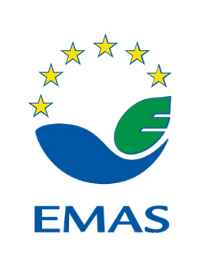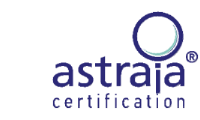WHAT IS EMAS?
EMAS is perceived in the European area as a publicly accepted label of quality, responsible environmental behaviour and transparency. It is intended for organizations that have opted for an open dialogue with the interested parties. At the same time, it is a chance to dispel the negative perception of some industries, which are often associated with adverse environmental effects by the public. Through the public environmental reports, the organization has the space to explain and present its environmental performance.
These public reports are validated by the accredited environmental verifier. It is a guarantee that the information in the report is true and acceptable.
ronmentálnym overovateľom, čo je záruka, že informácie uvedené v správe sú pravdivé a dôveryhodné.
Legislative framework
The Eco-Management and Audit Scheme (EMAS) is a voluntary management tool created by the European Union that allows organizations to improve their environmental performance and benefit from a responsible approach to the environment. All public and private organizations can apply for EMAS registration.
EMAS PARTICIPATION IS ADOPTED IN:
organizácií v schéme Spoločenstva pre environmentálne manažérstvo a audit (EMAS)
1. Regulation (EC) No 1221/2009 of the European Parliament and of the Council of 25 November 2009 on the voluntary participation by organisations in a Community eco-management and audit scheme (EMAS)
2. Commission Regulation (EU) 2017/1505 of 28 August 2017 amending Annexes I, II and III to Regulation (EC) No 1221/2009 of the European Parliament and of the Council on the voluntary participation by organisations in a Community eco-management and audit scheme
3. Commission Regulation (EU) 2018/2026 of 19 December 2018 amending Annex IV to Regulation (EC) No 1221/2009 of the European Parliament and of the Council on the voluntary participation by organisations in a Community eco-management and audit scheme (EMAS)
4. COMMISSION DECISION of 7 December 2011 concerning a guide on EU corporate registration, third country and global registration under Regulation (EC) No 1221/2009 of the European Parliament and of the Council on the voluntary participation by organisations in a Community eco-management and audit scheme (EMAS)
5. COMMISSION DECISION (EU) 2017/2285 of 6 December 2017 Amending the user’s guide setting out the steps needed to participate in EMAS, under Regulation (EC) No 1221/2009 of the European Parliament and of the Council on the voluntary participation by organisations in a Community eco-management and audit scheme (EMAS)
6. Commission Decision (EU) 2015/801 of 20 May 2015 on reference document on best environmental management practice, sector environmental performance indicators and benchmarks of excellence for the retail trade sector under Regulation (EC) No 1221/2009 of the European Parliament and of the Council on the voluntary participation by organisations in a Community eco-management and audit scheme (EMAS)
7. Commission Decision (EU) 2016/611 of 15 April 2016 on the reference document on best environmental management practice, sector environmental performance indicators and benchmarks of excellence for the tourism sector under Regulation (EC) No 1221/2009 on the voluntary participation by organisations in a Community eco-management and audit scheme (EMAS)
8. Commission Decision (EU) 2017/1508 of 28 August 2017 on the reference document on best environmental management practice, sector environmental performance indicators and benchmarks of excellence for the food and beverage manufacturing sector under Regulation (EC) No 1221/2009 of the European Parliament and of the Council on the voluntary participation by organisations in a Community eco-management and audit scheme (EMAS)
9. Commission Decision (EU) 2018/813 of 14 May 2018 on the sectoral reference document on best environmental management practices, sector environmental performance indicators and benchmarks of excellence for the agriculture sector under Regulation (EC) No 1221/2009 of the European Parliament and of the Council on the voluntary participation by organisations in a Community eco-management and audit scheme (EMAS)
10. Commission Decision (EU) 2019/61 of 19 December 2018 on the sectoral reference document on best environmental management practices, sector environmental performance indicators and benchmarks of excellence for the public administration sector under Regulation (EC) No 1221/2009 on the voluntary participation by organisations in a Community eco-management and audit scheme (EMAS)
11. Commission Decision (EU) 2019/62 of 19 December 2018 on the sectoral reference document on best environmental management practices, sector environmental performance indicators and benchmarks of excellence for the car manufacturing sector under Regulation (EC) No 1221/2009 on the voluntary participation by organisations in a Community eco-management and audit scheme (EMAS)
12. Commission Decision (EU) 2019/63 of 19 December 2018 on the sectoral reference document on best environmental management practices, sector environmental performance indicators and benchmarks of excellence for the electrical and electronic equipment manufacturing sector under Regulation (EC) No 1221/2009 of the European Parliament and of the Council on the voluntary participation by organisations in a Community eco-management and audit scheme (EMAS)
13. Act No. 351/2012 Coll. on the Environmental Verification and Registration of Organisations in the European Union Eco-Management and Audit and on Amendments to Certain Laws
EMAS requirements
EMAS requirements are regulated by the Regulation (EC) No. 1221/2009, which core is the ISO 14001 standard. We can say that EMAS is its extension. In addition to the requirements of 14001 standard, the organization involved in EMAS puts the main emphasis on:
- the compliance with the environmental legal requirements;
- the assessment of environmental performance through specified indicators;
- the communication with the public through the environmental statement;
- the employees involvement in the process of environmental performance improving.
EMAS is therefore an appropriate tool for the organizations wishing to take environmental protection considerably into account in decision-making processes.
VERIFICATION PROCESS
The verification of the environmental statement is a relatively complicated process that has a fixed procedure and conditions by the accreditation rules for the validation of the environmental statement. The entire verification process consists of six phases:
- The request to conclude the contract
- The preparation for verification
- The verification and the verification report
- The decision process on the validation of the environmental statement
- The surveillance of the registered subject
- The repeated verification (after 3 years)
The environmental statement verification process is similar to the certification process.
RULES FOR THE USAGE OF THE VALIDATED ENVIRONMENTAL STATEMENT:
The verified subject is responsible for the correct usage of the validated environmental statement and environmental information. Those documents shall not be presented in the context of the other information, catalogues or promotional material of the verified subject in such a way that anyone could be misled:
- that it is the environmental statement or information from the other subject than the verified subject,
- by e.g. environmental statement concerning the other operations or the other organizations – e.g. the maternal concern,
- by inserting the other data into the validated environmental statements and information than are stipulated in the validated documents;
- that it is an assessment of the environmental suitability of the product or any other meaning of these documents than presenting of the environmental performance of the verified subject.
In the case that the environmental verifier team finds out violation of these rules during the verification process, he/she is obliged to report it in the relevant verification report and to require from the subject being assessed to take the appropriate corrective and preventive measures to solve the identified deficiencies. Those deficiencies shall be taken into account by the management of the environmental verifier when deciding to maintain, suspend or cancel the validity of the mentioned documents in accordance with the principles set out in the internal procedures.



